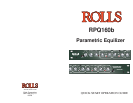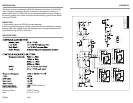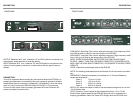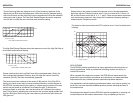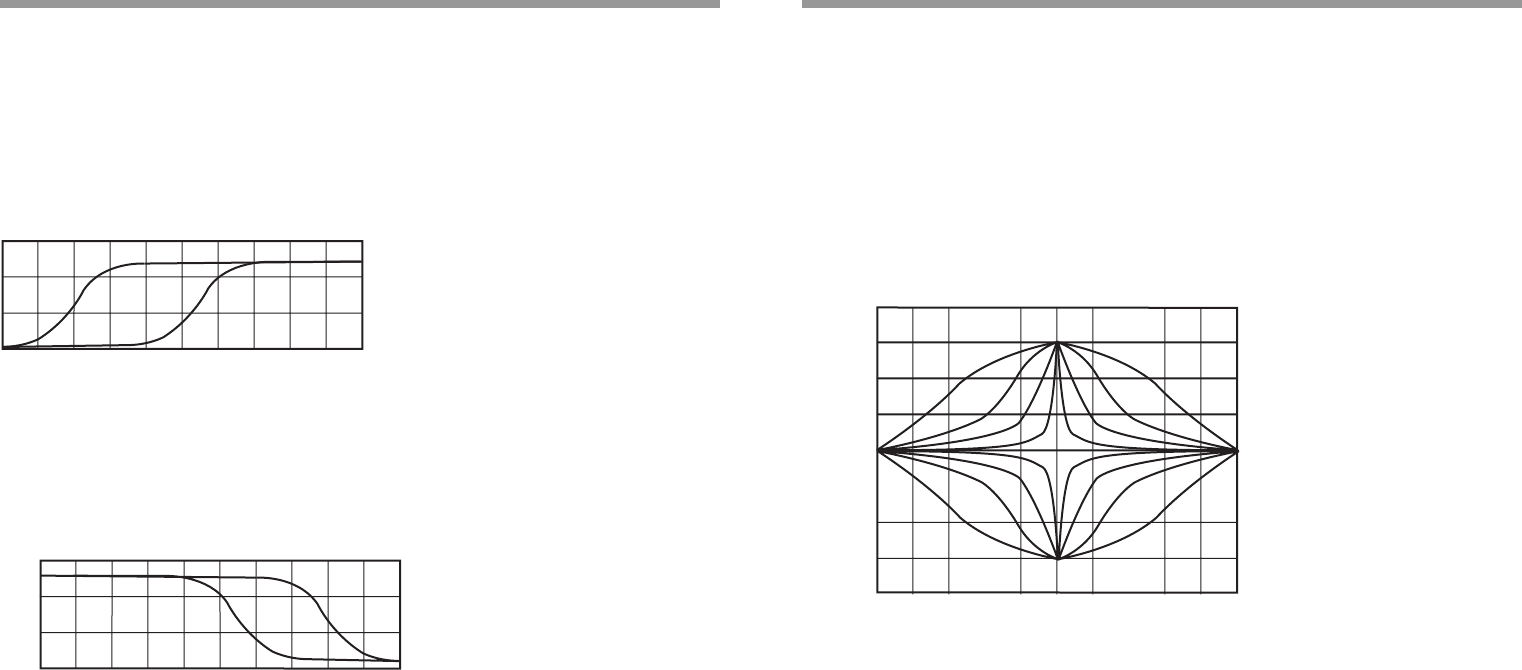
OPERATION OPERATION Cont.
20
20k
16k
40
80
160
320
640
12k
Frequency (Hz)
Set at 16Hz
Set at 500 Hz
LOW SHELF SWEEP DIAGRAM
O dB
The High Shelf Sweep Diagram shows the response curve of the High Self filter at
its minimum and maximum setting.
20
40k
20k
40
80
160
320
640
12k
Frequency (Hz)
HIGH SHELF SWEEP DIAGRAM
O dB
Set at 30 kHz
Set at 1 kHz
The shape is most narrow when the OCT control is set at .3, and is widest at the
3 setting.
100
10k 20k
6k
200
600
1k
2k
Frequency (Hz)
-20
-15
-10
- 5
5
10
15
20
50
Amplitude, 5 dB/division
Please note that when the Low Shelf is set fully counterclockwise (16 Hz), the
filter is essentially bypassed. Similarly, when the High Self control is set fully
clockwise (30 kHz), that filter is essentially bypassed.
The Level control has a detente at the center (0 dB) position. if the Clip LED is
lighting, the Level control may be turned counterclockwise to reduce the gain of
the RPQ160, thereby reducing the clipping. If a weak signal is present, the Level
control may be turned up (clockwise) to increase the gain. To achieve the
maximum signal to noise ratio, the Level should be set 3 dB below the clipping
level. This is done by adjusting the Level control with a normal signal present until
the Clip LED lights, then turning the Level down to just below the point when the
LED goes out.
Shown below is the typical symmetrical response curve of a swept parametric
band filter with the Frequency control set at 1 kHz, the Level set at +15 and -15
dB, and the Octave control set at .3, .5, 1, and 3. These curves remain consistent
over the frequency spectrum, they simply shift to whatever frequency setting is
indicated by the Frequency control.
The two shelving filters are designed to roll off the frequency response of the
Signal; the Low Shelf cuts the frequencies 3 dB at the control’s indicated setting
and rolls off below, and the High Shelf cuts the frequencies 3 dB at the indicated
setting and rolls of above. The Low Shelf Sweep Diagram shows the response
curve of the Low Self filter at its minimum and maximum setting.
APPLICATIONS
The RPQ160’s precise equalization has many applications including school or
church gymnasiums, home or professional recording studios, live sound, or
musical instruments.
When coupled with a spectrum analyzer, the RPQ160 can match exactly the
properties of typical acoustic resonances and reflections, and make immediate
improvements to any installed system’s amplitude and phase response.
Live applications include equalizing trouble spots where a mix may be muddy, too
harsh, flat, and even eliminate feedback precisely without affecting the flavor of
the overall sound.
Recording studios benefit from the RPQ160’s precise equalization in notching out
trouble frequencies that need to be removed, or by re-equalizing a final mix.



